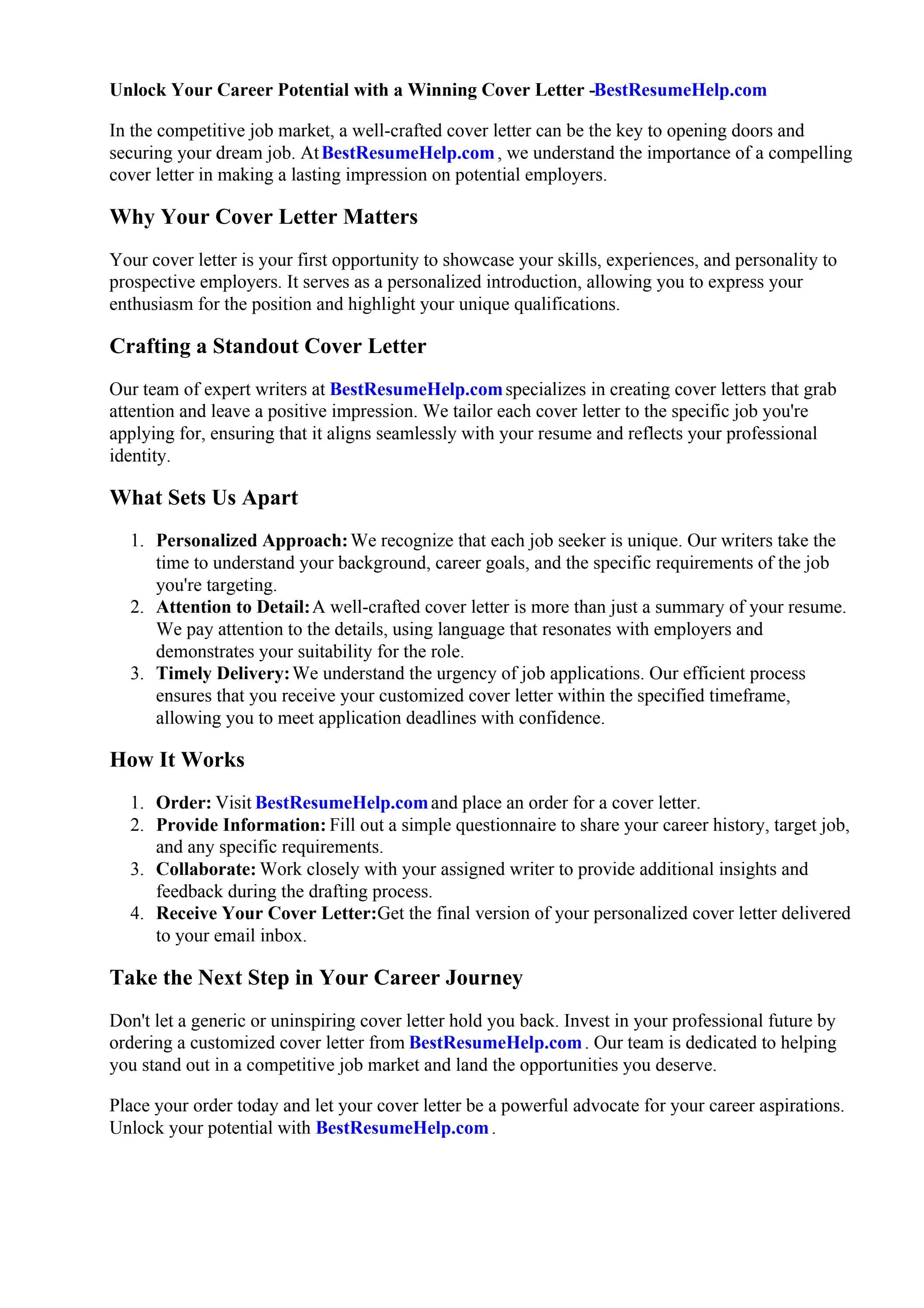Understanding the Cover Letter
A cover letter is your first introduction to a potential employer, and it serves as a companion document to your resume. It’s your chance to showcase your personality, enthusiasm, and the unique value you bring to the table. For high school students, a well-crafted cover letter becomes even more important, as it allows you to demonstrate skills and qualities that might not be readily apparent from your limited work experience. It’s a space to highlight your passion for the role, express your understanding of the company, and convey why you are the ideal candidate, even without extensive professional experience.
Why a Cover Letter Matters
In the absence of a long work history, a cover letter provides an opportunity to highlight your potential and eagerness to learn. It helps you stand out from other applicants, especially when you’re competing against individuals with more experience. It allows you to explain any gaps in your resume, such as a lack of paid employment. Furthermore, it helps you demonstrate your written communication skills, attention to detail, and understanding of the job requirements. By demonstrating your interest in the specific role and company, a cover letter transforms your application from a simple submission into a compelling pitch.
Highlighting Transferable Skills
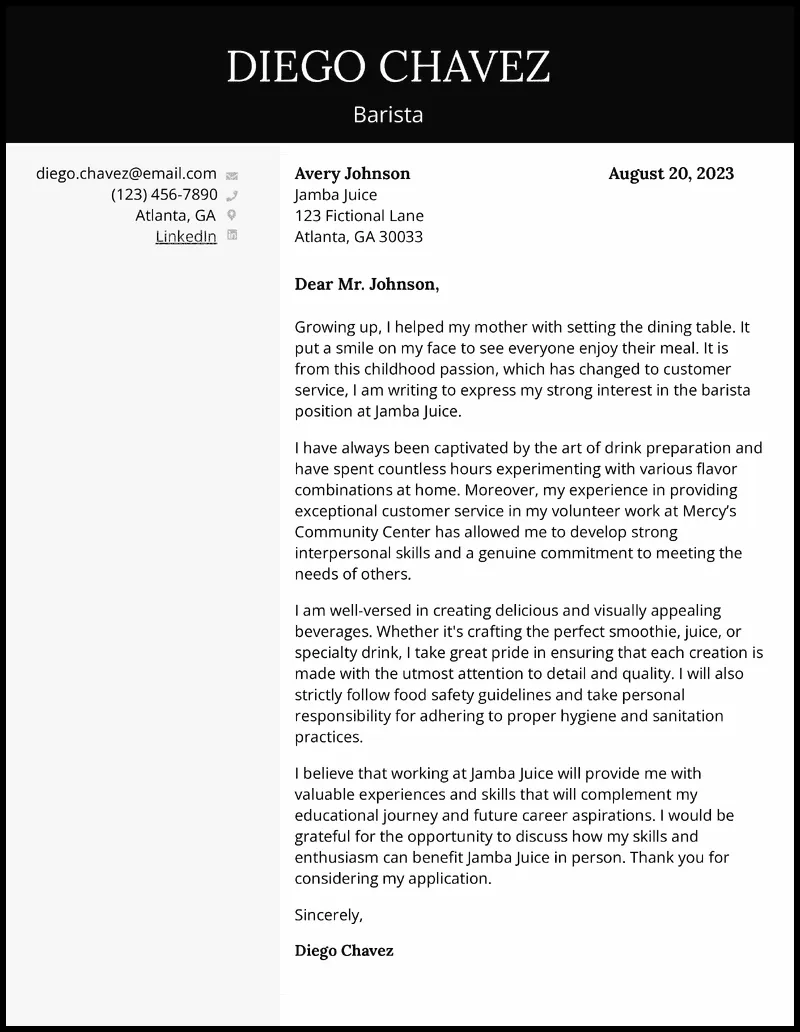
Transferable skills are those abilities you’ve developed in one area and can apply to another. Since you might not have direct work experience, emphasizing transferable skills is key. Think about your involvement in school clubs, sports teams, volunteer activities, or even personal projects. These experiences have equipped you with valuable skills that employers seek. These abilities can be applied in any workplace setting, showcasing your adaptability and suitability for the job. By focusing on these skills, you prove you can contribute to the role.
Identifying Your Skills
Start by making a list of your skills. Reflect on all your experiences: school projects, volunteer work, extracurricular activities, and even hobbies. What tasks did you perform? What roles did you take on? Think about the skills you used during these activities. Consider things like problem-solving, communication, teamwork, time management, and leadership. Be specific. If you helped organize a school event, you likely used organizational, communication, and teamwork skills. Write down everything you can think of. The more detailed your list, the better equipped you will be when writing your cover letter.
Communication Skills
Communication skills are essential for almost any job. Think about how you’ve used these skills. Have you given presentations in class? Did you participate in debates? Did you write articles for a school newspaper or blog? Did you assist customers or interact with the public during volunteer work? Showcasing your ability to express yourself clearly, both verbally and in writing, is important. When describing your experiences, use action verbs to highlight your communication skills, such as “presented,” “communicated,” “wrote,” or “collaborated.”
Teamwork and Collaboration Skills
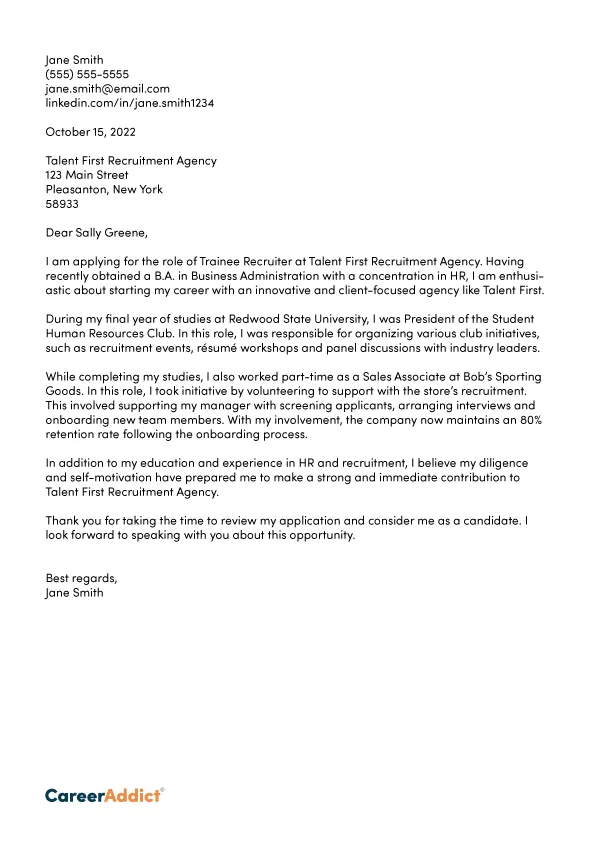
Teamwork and collaboration are highly valued by employers. Reflect on your experiences working with others. Have you been part of a sports team, a club, or a group project? Describe your role within the team and how you contributed to its success. Did you offer assistance to teammates? Did you share ideas or work together to achieve a common goal? Highlight your ability to work well with others. Show that you can cooperate, compromise, and contribute positively to a team environment. Use phrases like “collaborated with,” “worked alongside,” or “contributed to a team effort.”
Time Management and Organization Skills
Employers want to know you can manage your time and stay organized. Think about how you balance your schoolwork, extracurricular activities, and personal life. Have you taken on responsibilities such as tutoring, managing a club, or volunteering? Showcase your ability to prioritize tasks, meet deadlines, and stay organized. Provide examples of how you have successfully managed your time and maintained organization in the past. Use action verbs to illustrate your skills, such as “managed,” “organized,” “prioritized,” or “scheduled.”
Formatting Your Cover Letter
The formatting of your cover letter is just as important as its content. It creates a good first impression and demonstrates your attention to detail. Use a professional font, such as Times New Roman, Arial, or Calibri, with a font size between 10 and 12 points. Keep your letter concise; aim for one page. Use clear and easy-to-read language. Break up the text into short paragraphs to make it easier for the reader to scan. Maintain consistent spacing throughout the document. A well-formatted cover letter signals professionalism and respect for the reader’s time.
Contact Information and Date
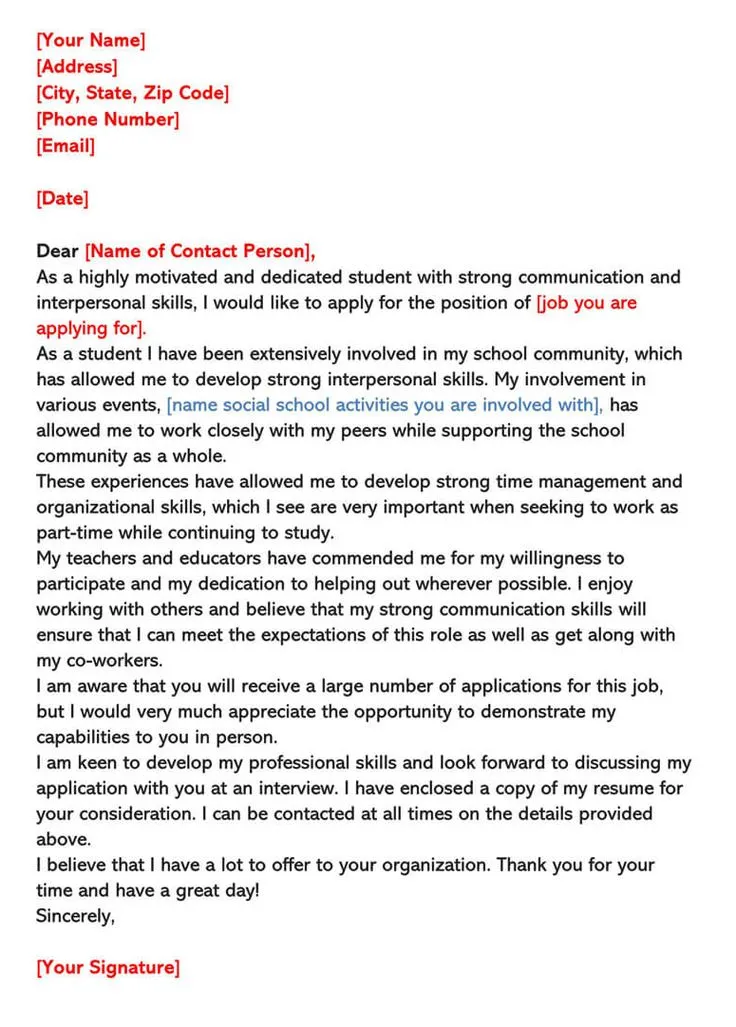
At the top of your cover letter, include your full name, address, phone number, and email address. Make sure your email address is professional-sounding (e.g., firstname.lastname@email.com). Below your contact information, include the date. Then, add the name of the hiring manager and the company’s address if you know it. If you don’t know the hiring manager’s name, you can use a generic greeting like “Dear Hiring Manager.”
The Salutation
Always begin your cover letter with a professional salutation. If you know the hiring manager’s name, use “Dear Mr./Ms./Mx. Last Name.” If you don’t know the name, use “Dear Hiring Manager” or “Dear [Company Name] Hiring Team.” Avoid overly informal greetings like “Hi” or “Hello.” The salutation sets the tone for the rest of your letter, so it’s essential to make a positive first impression. Proper salutations demonstrate attention to detail and professionalism, which are critical attributes for any job.
Body Paragraphs
The body paragraphs are where you highlight your skills and experiences and explain why you’re a good fit for the job. The body of your cover letter should typically consist of two to three paragraphs. Each paragraph should focus on a specific aspect of your qualifications or your interest in the position. Use action verbs, such as “managed,” “organized,” “collaborated,” and “created,” to make your accomplishments more vivid. These action verbs highlight the impact and value you brought to the situation.
Opening Paragraph
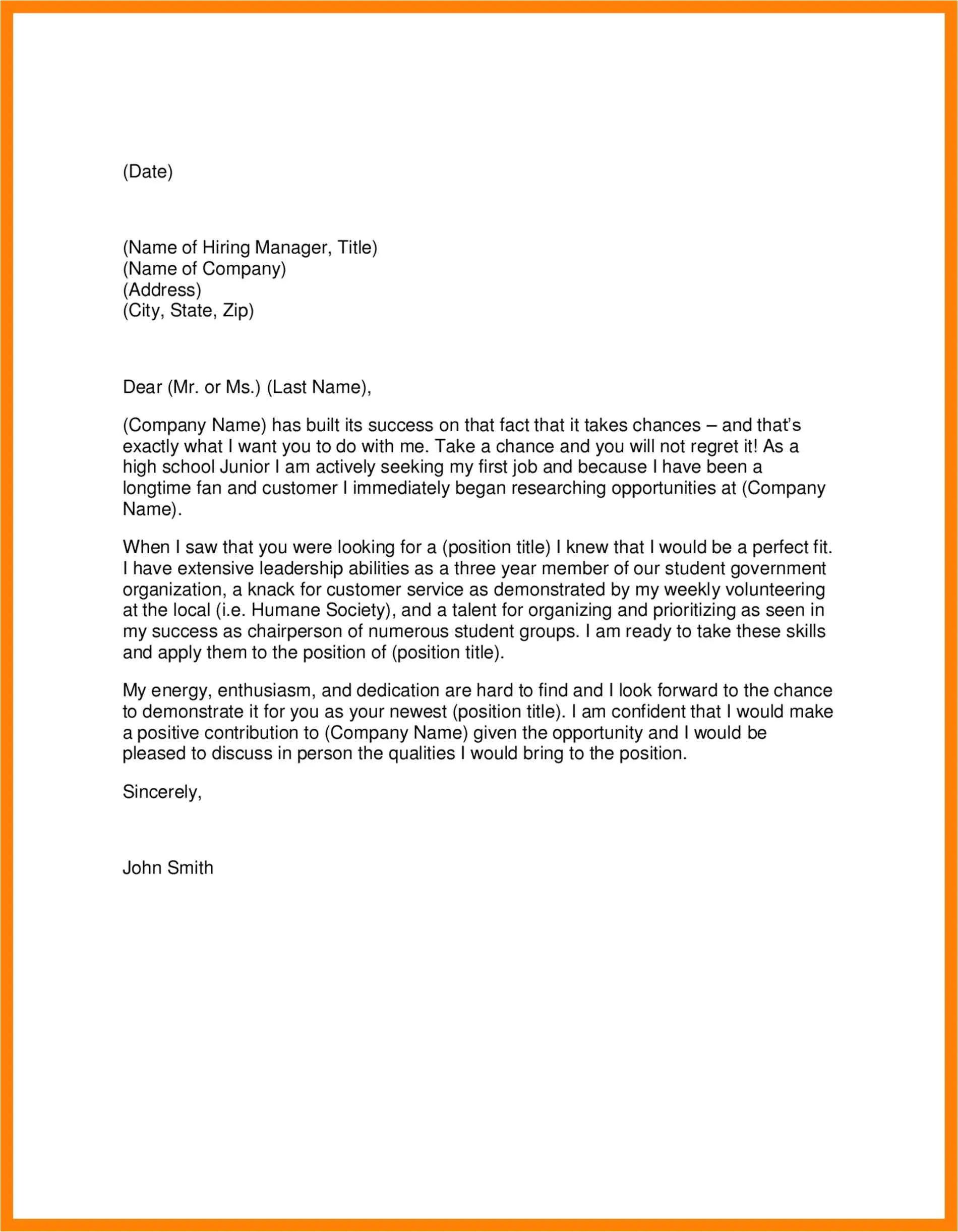
The opening paragraph should state the position you’re applying for and how you learned about it. Briefly mention why you’re interested in the job and the company. Show enthusiasm and excitement for the opportunity. Capture the reader’s attention from the start. This is your chance to grab their interest. Keep this paragraph concise, but make sure it conveys your enthusiasm and clearly states your purpose. This is also your opportunity to customize the letter, showing that you’ve paid attention to the job description.
Middle Paragraph
This is where you showcase your transferable skills and relate them to the job requirements. Describe your relevant experiences and how they demonstrate your skills. Support your claims with specific examples. Quantify your achievements whenever possible. For instance, instead of saying, “I improved customer service,” say, “I improved customer satisfaction scores by 15% through active listening and problem-solving.” If you have volunteer work, use it as an example of your experience. The middle paragraph should clearly connect your skills and abilities with the job’s demands.
Closing Paragraph
In the closing paragraph, summarize your key qualifications and reiterate your interest in the position. Thank the employer for considering your application. Express your eagerness to learn more about the opportunity and discuss your skills further. Keep the tone positive and enthusiastic. This final impression should leave the reader with a strong desire to learn more about you and your potential contributions to the company. Express your gratitude for their time and consideration.
The Closing and Call to Action
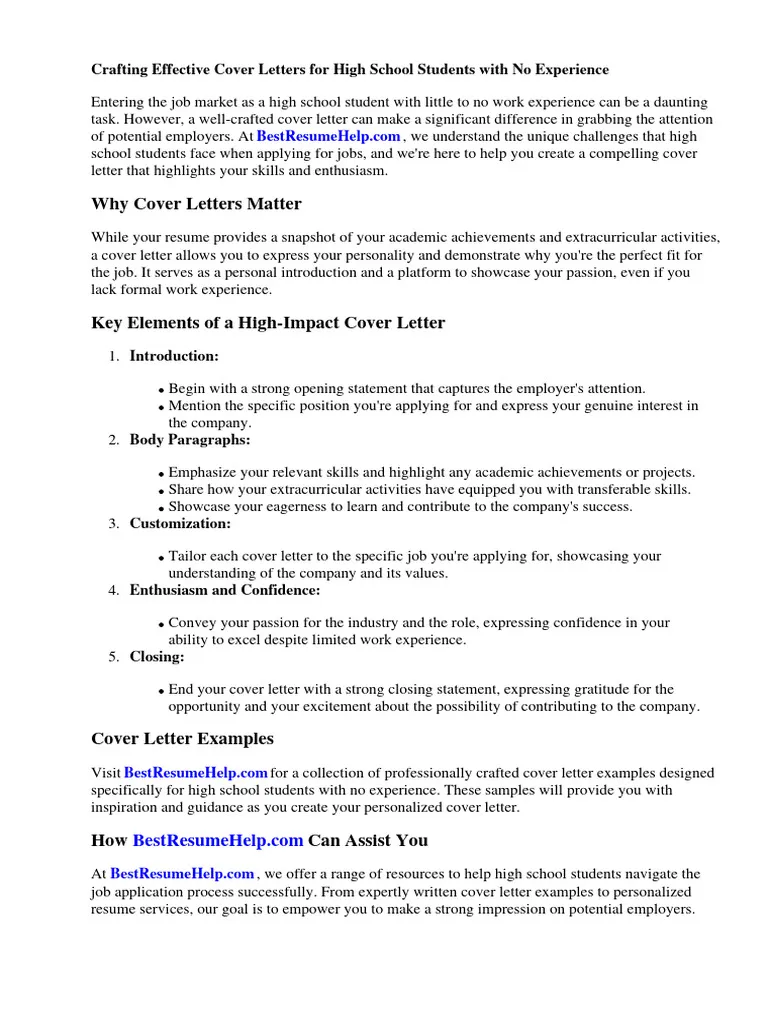
End your cover letter with a professional closing, such as “Sincerely,” “Best regards,” or “Thank you.” Then, type your name. Immediately below your closing, consider adding a call to action. This could be a simple statement like, “I look forward to hearing from you.” Or, you could add, “I am available for an interview at your earliest convenience.” The call to action is a polite way of encouraging the employer to contact you. The goal is to leave the reader with a clear path forward.
Tailoring Your Cover Letter
A generic cover letter rarely works. It’s crucial to tailor your cover letter to each job application. Read the job description carefully and identify the key requirements and skills the employer is looking for. Modify your letter to reflect your understanding of these needs. Highlight the skills and experiences that are most relevant to the specific job. Customize the opening and closing paragraphs to express your interest in the specific company and position. Personalize your letter, demonstrating that you’ve put in the effort to research the company and understand the role.
Researching the Employer
Before writing your cover letter, research the company. Visit the company’s website, read their mission statement, and check their social media profiles. Learn about their products or services, their values, and their culture. Demonstrate your interest in the company and explain how your skills and experiences align with their goals. Use the information you gather to personalize your cover letter. Show that you’re genuinely interested in the company and that you understand what they do. This will set you apart from other applicants who may not have taken the time to do their research.
Using Keywords from the Job Description
Pay close attention to the keywords used in the job description. These are the words and phrases the employer is looking for. Incorporate these keywords naturally into your cover letter. Use them to describe your skills and experiences. This demonstrates that you have the qualifications the employer is seeking. It also helps the employer quickly identify your relevant skills. Avoid keyword stuffing; your letter should still read naturally. Integrate the keywords in a way that makes sense within the context of your writing.
Proofreading and Editing
Proofreading and editing your cover letter is essential. Typos, grammatical errors, and formatting inconsistencies can undermine your professionalism and make you appear careless. Before submitting your cover letter, carefully review it. Check for any errors in grammar, spelling, and punctuation. Read the cover letter aloud to catch any awkward phrasing or unclear sentences. Ask a teacher, parent, or friend to review your letter for feedback. Getting a second pair of eyes can help you find mistakes that you might have missed. Ensure your cover letter is polished and free of errors. A well-proofread cover letter shows that you pay attention to detail and take pride in your work.
Ensuring Accuracy and Professionalism
Your cover letter should be honest and accurate. Don’t exaggerate your skills or experiences. Be truthful about your qualifications. Focus on what you can offer and your willingness to learn. Maintain a professional tone throughout your letter. Avoid using slang, casual language, or emojis. Make sure your letter reflects your maturity and professionalism. By following these guidelines, you can create a compelling cover letter that increases your chances of landing a job, even with limited experience. A well-written cover letter will highlight your unique qualities and demonstrate your eagerness to contribute to the company.
